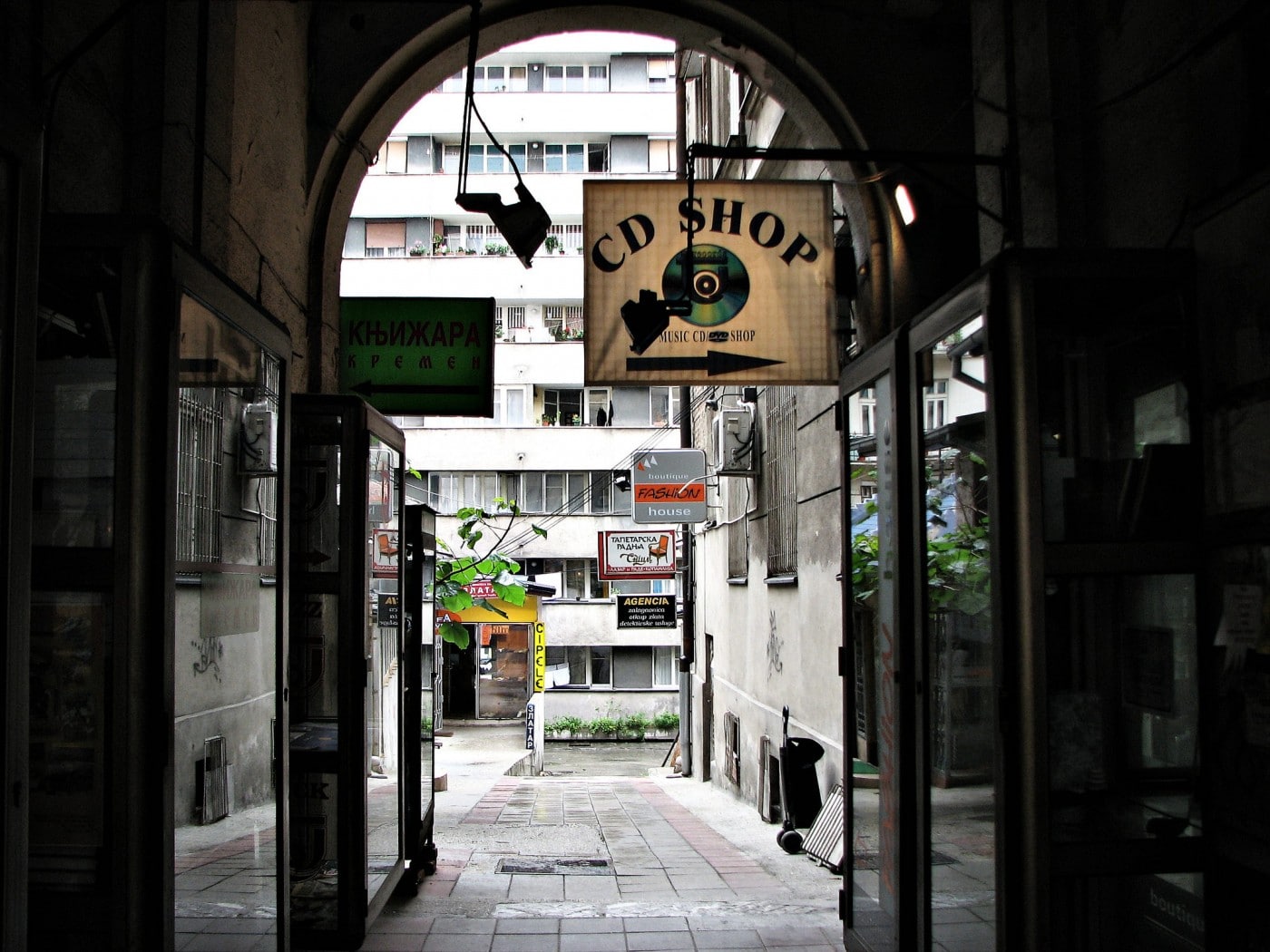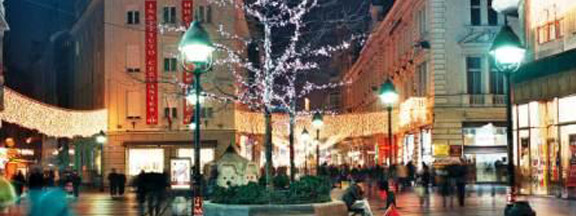
What’s New in Belgrade
Let’s get straight to the point: there are certain things that could happen only in Belgrade. In many capital cities, a usual meeting point is by a monument of a local historic figure. Belgrade, the capital city of Serbia and Montenegro, is no different. However, instead of saying, “Let’s meet by the statue of the Duke Milan Obrenovic,” even a devoted historian would say, “See you by the horse.” If truth be told, in that particular artistic depiction, the famous duke is sitting on quite an impressive horse.
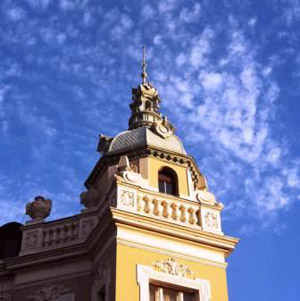
The key to understanding Belgrade is appreciating the local humor—a black, self-deprecating, sarcastic sense of humor that most likely helped Belgradians survive 400 years of the Ottoman Empire, Slobodan Milosevic’s dictatorship, hardships under economic sanctions, and NATO bombings.
In almost every conceivable way, Belgrade is a mix of East and West. Take the food, for instance – an average restaurant menu may be seen as a ‘clash of civilizations’—from Vienna schnitzel and Russian salad to Turkish-style stuffed peppers and baklava.
There are plenty of restaurants in Belgrade specializing in the national cuisine. Almost without exception, all of them have menus in foreign languages, and all have English-speaking people on staff. There is plenty of room for comfortable sitting and eating in Daèa, which is located in a traditional Serbian country house and is as famous for its generous portions as it is for its souvenir shop. A completely different ambience awaits at Jevrem, which is situated in an apartment of a pre-WWII building. The restaurant evokes an earlier era, when Belgrade was a European capital on par with Budapest and Vienna. Dinner at Maximilijan features live Serbian music. To eat like a local, head to Prolece, Vuk and Znak Pitanja. While these are not fancy places, the food is still excellent, and the menus are pretty much the same as the menus at the restaurants mentioned above, yet prices are often significantly lower.
So, what can you expect at a national restaurant in Belgrade? For a starter, perhaps gibanica, which is a delicious cheese pie in phyllo. A main course might be leskovaèki èevapèiæi, traditional grilled mixed meat and peppers, or krilca na zaru, marinated grilled chicken wings. Typical desserts include tufahije, cooked apples stuffed with walnuts, and baklava.
A meal would not be complete without a selection of spirits. A lunch or a dinner usually starts with a shot of rakija (brandy). High on the list of domestic brandies are shlivovitza (plum), krushkovacha (pear), and loza (grape vine). Another good accompaniment to a meal is a local pivo (beer), such as Jelen, and Lav. The most popular local red wine is Vranac, while a decent local white is Alexandria. Most of the fancy Belgrade restaurants offer a selection of limited-edition wines that are produced locally and exclusively for the restaurant.
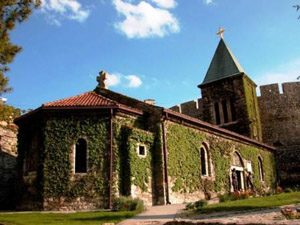
After-dinner coffee is a tradition. What is referred to as “domestic” coffee here is actually Turkish coffee – the thick, black and unfiltered coffee popular all over the Balkans and the Middle East.
In Belgrade, clubs, cafes and restaurants can be found not only in the center of the city but on the riverbanks, river islands, on boats, in former train coaches and buses, on rafts, in former churches, in public parks, in schoolyards, rooftops, in basements, in garages, in former nuclear shelters, underground, completely unmarked in private apartments, and even in places that are protected by law due to their historic importance. Belgradians like to celebrate every day of the week.
A typical party evening gets started a bit after 8:00 P.M. in one of more than 50 cafes and clubs in and around Strahinjica Bana Street. The real fun begins after midnight on docked barges called a splav on the Sava and Danube rivers. The word that describes the atmosphere best is sizenje, which roughly translates to “let’s go crazy.” A typical splav has ample food and beer, loud, live Balkan-style music, and crowds of people dancing, clapping and cheering.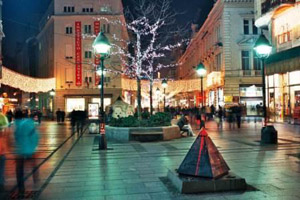
Historic attractions in Belgrade include the Kalemegdan Fortress, which is located in a beautiful park in the center of the city, and features architectural ruins from the Roman, Ottoman and Austro-Hungarian empires. Ružica, one of the oldest churches in the region, is decorated with swords, bullets and other remnants from historic army battles. The chapel of the church is built over a spring that is believed to have healing powers.
Belgrade was a bustling bohemian enclave in the nineteenth-century, and this part of its history is preserved in Skadarlija, which is also known as Belgrade’s Montmartre.
Serbia’s history as a monarchy is best explored at The Royal Compound, while the Princess Ljubica Residence offers a glimpse of the lives of Serbian nobles during the Ottoman Empire. Kuæa Cveæa (House of Flowers) is the tomb of Josip Broz Tito, the former Yugoslavian communist president.
Among Belgrade’s many museums and galleries are two little-known gems: the Fresco Gallery, where beautiful Orthodox Christian frescoes are on display, and the Museum of Nikola Tesla, which explores the life and work of the inventor of electricity transmission, who was of Serbian origins.
Belgrade is a city that is in the midst of exciting changes. Why don’t we see each other “by the horse” and check out what’s happening.
Where to stay:
Country Code for Serbia is (381) and the city code for Belgrade is (11)
Aleksandar Palas. The is the best traditional hotel in town; Kralja Petra 13-15; 330-5300; www.aleksandarpalas.com
Hyatt Regency. This is one of the most modern hotels in Belgrade; Milentija Popovica 5; 301-1234; www.belgrade.regency.hyatt.com
Hotel Moskva. Very grandiose and traditional European. This hotel is a landmark of the city; Balkanska 1; 268-6235; www.hotelmoskva.co.yu
Hotel Balkan. This is a mid-range hotel in an ideal location; Prizenska 2; 268-7466; www.balkanhotel.net
Eating out:
Some suggestions for Serbian cuisine
Daèa; Patrisa Lumumbe 49; 2781-009
Jevrem; Gospodar Jevremova 36; 328-1131
Maximilijan. 23 Majke Jevrosime St.; 322-5568, 322-5016
Proleæe. Vuka Karadžiæa 11; 635-436
Vuk. Vuka Karadžiæa 12; 629-761
Znak Pitanja-“?” (The Question Mark in Serbian); Kralja Petra I br. 6; 635-421
What to see:
Kalemegdan Citadel and Ružica Church
Yugoslav Aeronautical Museum located next to the Belgrade airport. Exhibits are definitely eclectic, and include artifacts from the WWII and communist era; 11180 Airport Belgrade; 670-992.
Nikola Tesla Museum explores the life and work of the inventor of electricity transmission, who was of Serbian origins; Krunska 51; 243-3886; www.tesla-museum.org
Kalenic Pijaca (Greenmarket Kalenich). A great place to buy fruits and vegetables as well as experience local flavors; Maksima Gorkgog Street 55.

